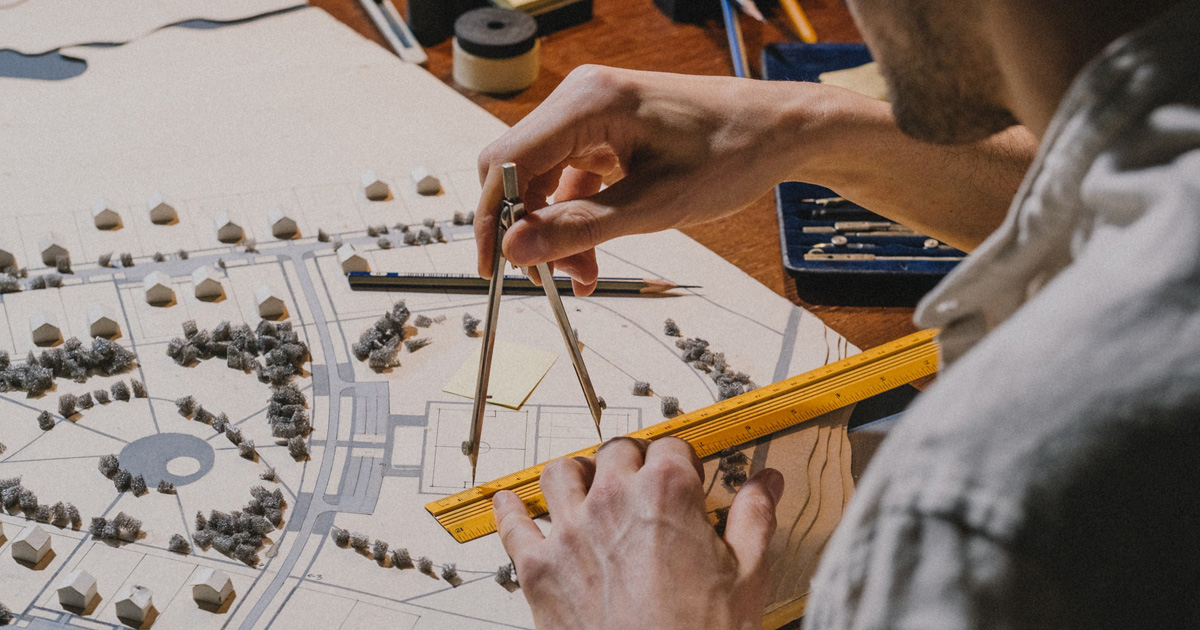Architect Rules for Designing Timeless Interiors
Architect Rules for Designing Timeless Interiors
Blog Article
Understanding the Diverse Career Paths Available for Aspiring Architect
As an ambitious Architect, you have a world of occupation courses waiting for you. Whether you're attracted to typical architecture or the nuances of lasting design, there's a particular niche that aligns with your interests.
Standard Design: Designing Structures and Structures
Traditional design concentrates on making buildings and structures that mix capability with visual allure. Your designs can mirror cultural heritage, showcasing local customs while fulfilling modern demands.
You'll establish skills in composing, model-making, and site evaluation, allowing you to envision and connect your ideas efficiently. Engaging with customers, you'll need to understand their vision and equate it right into viable styles.
Furthermore, developing codes and sustainability practices are necessary in your job, guaranteeing your structures are eco pleasant and secure. As you expand in your profession, you'll find possibilities in domestic, industrial, or also reconstruction tasks, each offering special difficulties. Embracing traditional design leads the way for a fulfilling career that pays homage to the past while shaping the future.
Urban Preparation: Shaping Communities and Public Spaces
As an ambitious Architect, you can play an important function as an urban organizer, transforming exactly how neighborhoods connect and work. By using community interaction strategies, you'll guarantee that residents have a voice fit their atmosphere. Plus, incorporating lasting layout concepts will assist create spaces that not just meet today's demands but additionally shield the future.
Duty of Urban Planners
While several might think about engineers as the sole dreamers behind structures, metropolitan planners play a crucial role in shaping the more comprehensive landscape of areas and public areas. They analyze land usage, zoning regulations, and neighborhood needs to produce sustainable atmospheres that improve quality of life. By working together with different stakeholders, you'll aid design parks, transport systems, and houses that advertise social communication and availability. Urban coordinators also concentrate on environmental factors to consider, making sure that advancements incorporate environment-friendly spaces and support biodiversity. Your competence in spatial design and area characteristics enables you to picture future growth while protecting cultural heritage. In this vital role, you'll directly affect exactly how people experience their surroundings, making every task a chance for positive adjustment.
Neighborhood Involvement Techniques
Efficient neighborhood engagement methods are essential for metropolitan coordinators to ensure that the voices of locals are heard and valued in the planning procedure. To cultivate significant dialogue, you must prioritize open online forums and workshops where area participants can express their ideas and worries. Usage studies and social media sites to reach a more comprehensive audience, ensuring diverse viewpoints are consisted of. Working together with neighborhood companies can improve trust and help with deeper connections. It is essential to supply clear information regarding suggested tasks and decision-making processes, enabling citizens to really feel educated and encouraged. By proactively integrating and paying attention comments, you'll produce rooms that mirror the community's requirements, ultimately leading to more sustainable and effective city settings. Accept transparency and constant dialogue for lasting influence.
Lasting Layout Principles
When designing metropolitan rooms, including lasting style principles is crucial for creating atmospheres that prosper both environmentally and socially. You need to begin by concentrating on power performance, utilizing products that lower waste and promote recycling. Think about incorporating eco-friendly spaces, like gardens and parks, to boost biodiversity and enhance air high quality. Advertising walkability and public transportation can reduce dependence on autos, fostering a healthier neighborhood.
Designing with water preservation in mind is likewise crucial-- assume about rain gardens and absorptive surface areas to manage stormwater. Including community members during the preparation process guarantees that the spaces you create satisfy their requirements and urge social communication. By embracing these concepts, you'll add to vivid, lasting city landscapes that profit every person.

Landscape Style: Developing Sustainable Outdoor Settings
As you discover landscape style, you'll uncover essential layout concepts that develop gorgeous and functional outdoor areas. Lasting practices play an essential role in ensuring these atmospheres prosper while decreasing environmental effect. Plus, you'll discover a selection of job opportunities that permit you to make an actual distinction in just how people engage with nature.
Style Principles in Landscape
Understanding layout principles in landscape design is crucial for producing sustainable outside settings that harmonize with nature. You'll need to ponder aspects like scale, equilibrium, and percentage to guarantee your styles feel cohesive and inviting. Integrating indigenous plants not just improves biodiversity but also decreases water use, making your landscape resistant. Consider the circulation of space and how individuals communicate with it; paths and seating locations ought to invite expedition and leisure. In addition, take note of seasonal modifications, making with materials that enhance the surroundings year-round (Architect). By focusing on sustainability and aesthetic appeals, you can produce outdoor areas that enhance the community and advertise wellness. Accepting these principles will certainly establish a solid structure for your career in landscape design.
Sustainable Practices Review
Lasting methods in landscape architecture not only concentrate on aesthetics yet likewise focus on environmental wellness and source preservation. You can make areas that promote soil wellness, such as making use of organic materials and exercising permaculture principles. Eventually, these practices assure your layouts benefit both individuals and the setting for years to come.
Career Opportunities Exploration
With a strong foundation in lasting techniques, landscape style provides a variety of job courses that allow you to make a significant impact on the environment. You might work as a landscape designer, creating visually pleasing and useful outside areas, or specialize in eco-friendly remediation, aiding to revive damaged communities. Urban planners usually team up with landscape architects to create green rooms in city settings, boosting city livability. If you're enthusiastic about education and learning, think about coming to be a landscape architecture instructor, my review here inspiring future generations. Furthermore, you could work with nonprofits focused on environmental sustainability or take part in study to innovate new practices. Each course not only shapes beautiful atmospheres yet also cultivates a much healthier earth for future generations.
Lasting Design: Concentrating on Eco-Friendly Practices
As you discover your profession in architecture, welcoming green techniques can set you apart in an affordable field. Lasting style concentrates on developing buildings that lessen environmental impact while boosting occupant wellness. By including sustainable products, energy-efficient systems, and sustainable building techniques, you'll add to a greener future.
Begin by getting expertise of green certifications like LEED or BREEAM, which can strengthen your qualifications. Consider just how all-natural light, ventilation, and thermal efficiency can maximize design. Work together with designers and environmental experts to introduce remedies that minimize waste and conserve resources.
Do not neglect the significance of neighborhood participation-- interesting regional stakeholders can inspire styles that balance with the environment. As clients significantly prioritize sustainability, your expertise in eco-friendly practices will certainly not just bring in tasks yet likewise meet your interest for liable style. Accept this essential facet of the great post to read profession, and watch your career flourish.
Historical Preservation: Safeguarding and Recovering Social Heritage
While you begin on your architectural trip, take into consideration the crucial function of historic conservation in keeping our cultural heritage. This area concentrates on the security and restoration of substantial buildings, sites, and structures that tell the tales of our past. By taking part in historical conservation, you'll help secure the building tradition that forms neighborhood identification.
As a historic preservation Architect, you'll evaluate historical importance and examine the condition of frameworks. You'll work carefully with guardians and historians to assure genuine restoration strategies are used. This career path permits you to blend creativity with study, allowing you to design services that respect initial materials and workmanship.
Your work not only adds to sustainability by reusing existing structures however additionally cultivates a feeling of pride within neighborhoods. Embracing this course will certainly aid you come to be a guardian of background, protecting the stories and aesthetics that improve our lives.
Interior Design: Enhancing Indoor Spaces
Historic preservation and interior style both share a commitment to improving the developed setting, yet they concentrate on various facets. While historical preservation emphasizes preserving a structure's cultural and historic value, interior style zeroes in on enhancing indoor areas for performance and appearances.
As an aspiring Architect, you'll discover that interior architecture allows you to blend creative thinking with technical abilities. You'll develop areas that not only look excellent but additionally advertise convenience and performance. This field entails comprehending how light, shade, and materials connect within a space, affecting state of mind and usability.
You'll function on numerous projects, from residential homes to business offices, guaranteeing that each atmosphere fulfills the requirements of its passengers. By focusing on individual experience, you can transform insides into inspiring and practical rooms, making a considerable effect on exactly how individuals communicate with their surroundings. Embrace the chance to improve indoor environments and shape the way people function and live.
Industrial Style: Merging Performance With Appearances
Industrial style plays a necessary role in producing items that perfectly mix appearances with performance, making sure that what you make use of everyday is not only visually appealing but also sensible. As an ambitious Architect, you can engage on your own in this field, focusing on creating every little thing from furniture to consumer electronics. Your job involves comprehending individual requirements, materials, and making procedures, enabling you to produce cutting-edge services that boost daily experiences.
In industrial layout, you'll often collaborate with designers, marketers, and manufacturers, ensuring that your layouts are not only gorgeous however also practical. You'll find out to balance type and feature, focusing on usability without sacrificing design. By sharpening your abilities in laying out, 3D modeling, and prototyping, you'll be well-equipped to bring your concepts to life. This occupation course supplies a vibrant environment where creativity meets practicality, making it a satisfying option for engineers interested in shaping the items of tomorrow.
Often Asked Inquiries
What Educational Accreditations Do I Required to End Up Being a Designer?
To come to be an engineer, you'll require an expert level in design, generally a Bachelor's or Master's. In addition, you'll need to finish an internship and pass the Architect Registration Exam to exercise legally.
Are There Certification Requirements for Various Building Occupation Paths?
Yes, there're certification requirements for various architectural courses. Architect. You'll require to pass tests, total teaching fellowships, and in some cases pursue specialized training, relying on your picked focus, like landscape style, urban style, or historic conservation
What Software Skills Are Essential for Architects Today?

Exactly How Can I Gain Practical Experience While Researching Style?
You can get useful experience by interning at building companies, taking part in layout competitors, volunteering for area jobs, or teaming up with schoolmates on real-world jobs. These chances enhance your skills and construct valuable links in the market.
What Work Opportunities Exist Outdoors Typical Architecture Firms?
You can check out various work chances outside typical style companies, like metropolitan preparation, interior decoration, landscape style, building management, realty development, or also roles in sustainability consulting. Each offers one-of-a-kind challenges and incentives.
Whether you're attracted to typical style or the nuances of lasting design, there's a specific niche that aligns with your rate of interests.When creating urban rooms, integrating sustainable design concepts is vital for creating settings that prosper both ecologically and socially.As you check out landscape architecture, you'll find essential design principles that create useful and gorgeous outside rooms.Comprehending style principles in landscape architecture is essential for creating sustainable outdoor settings that harmonize with nature.In commercial style, you'll often work together with marketing professionals, designers, and producers, ensuring that your layouts are not just lovely yet also practical.
Report this page